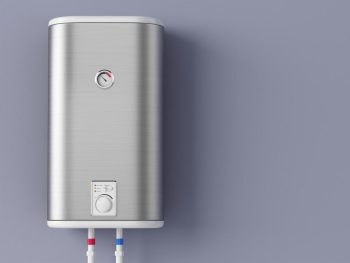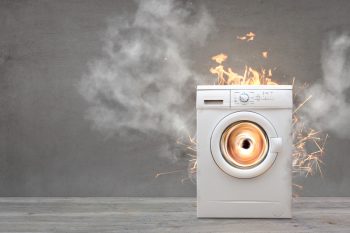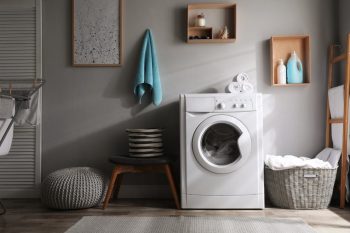
Air conditioning units come with a variety of modes and settings designed to enhance comfort and energy efficiency. One of these settings is the “Fan Mode”. But what exactly is the fan mode in an air conditioner and how does it work? Let’s delve into the details.
The fan mode in an air conditioner is a setting that activates the fan to circulate air within the room, without engaging the cooling or heating components of the unit. This means the fan simply re-circulates the existing air without altering the room’s temperature or humidity levels. It’s an energy-efficient mode that’s best used when you’re satisfied with the room’s current temperature and humidity but want to keep the air moving.
Understanding Fan Mode in an AC
Fan mode in an air conditioner is a setting that activates the fan component while keeping the cooling or heating components turned off. When you set your air conditioner to fan mode, the unit’s fan circulates air within the room without changing the temperature or humidity levels. The compressor, which is responsible for cooling the air, is turned off in this mode. This means that the temperature and humidity levels of the room don’t change because the fan is simply re-circulating air that is already in the room.
Fan Mode Vs Normal Mode
The main differences between using the AC in normal mode (cool mode) and fan mode are related to energy consumption, temperature control, and humidity control.
- Energy consumption: Fan mode uses less energy compared to normal mode because the compressor is turned off, and only the fan runs continuously. In normal mode, the compressor works to cool the air, which consumes more electricity.
- Temperature control: In normal mode, the air conditioner cools the air by taking heat out and pushing cold air inside the room. The temperature can be adjusted using the remote or the unit’s controls. In fan mode, the air conditioner circulates the air without cooling it. The temperature of the room doesn’t change because the fan is simply re-circulating the air that is already in the room.
- Humidity control: Normal mode can help control humidity levels in the room, as the compressor removes heat and moisture from the air. Fan mode, on the other hand, does not affect humidity levels, as it only circulates the existing air without cooling or dehumidifying it.
When to Use the Fan Mode
Using the fan mode in an AC can be beneficial in several situations: 1. Energy conservation: Operating the AC in fan mode consumes significantly less energy than other modes, such as cooling, heating, or dry mode. 2. Prolonging AC life: Continuously running the AC in cooling mode can take a toll on the unit. Using fan mode on cooler, less humid days can give your unit a break. 3. Maintaining comfortable room temperature: Fan mode is best used when you are already satisfied with the room’s temperature and humidity levels but want the comfort of gently circulating air. 4. Improved air circulation: Fan mode helps break up stagnant air pockets and ensures that air is evenly distributed throughout the room, eliminating hot or cold spots. 5. Air filtration: As the fan circulates air, it passes through the AC’s filters, capturing dust, pollen, and other airborne particles, improving air quality.
Potential Drawbacks of Using Fan Mode
While the fan mode in an air conditioner can be useful for improving air circulation and reducing energy consumption, it has limitations in terms of temperature control, cooling effect, and energy efficiency compared to other modes or using a regular fan.
- No temperature control: The fan mode does not provide any temperature control, meaning it only circulates air without altering its temperature.
- Limited cooling effect: Since the fan mode does not activate the cooling or heating components, it may not provide the desired cooling effect, especially during hot weather.
- Less even distribution of heating and cooling: When the fan mode is used, there might be a less even distribution of heating and cooling throughout the space, as the fan stops moving air to other spaces once the thermostat is satisfied.
- Increased energy usage and wear: Continuously running the fan mode can lead to increased energy usage and wear on the air conditioner’s components. However, it is important to note that the energy consumption in fan mode is still lower than in cooling mode.
- Less efficient than a regular fan: Running an air conditioner in fan mode may be less energy-efficient than using a regular electric fan for ventilation.
In conclusion, the fan mode in an air conditioner allows the blower fan to circulate air without cooling it, which can help distribute cool air already in your home and save energy by not using the cooling function. However, using the fan mode continuously can increase the maintenance needs of your HVAC system. It’s important to consider these factors and use the fan mode judiciously to reap its benefits while avoiding potential drawbacks.
Frequently Asked Questions
Does fan mode in an AC work in all types of air conditioners?
Yes, fan mode is a standard feature available in almost all types of air conditioners, including split, window, and central air conditioning systems.
Can I use the fan mode in an AC during winter?
Yes, you can use the fan mode during winter. However, since it does not provide any heating, it should be used mainly for air circulation and not temperature control.
Is fan mode in an AC the same as the “auto” mode?
No, fan mode and auto mode are different. In fan mode, only the fan runs continuously, while in auto mode, both the fan and the compressor turn on and off based on the room’s temperature and the thermostat settings.
Can using fan mode in an AC help reduce air conditioner noise?
Yes, using the fan mode can reduce the noise level of an air conditioner because the compressor, which is the noisiest part of the unit, is turned off in this mode.
Does fan mode in an AC help remove odors from the room?
Fan mode can help to some extent by circulating the air, but it does not actively remove odors. For odor removal, it’s better to use air purifiers or deodorizers.












